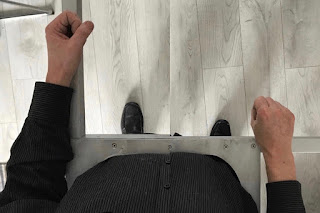Last week I:
(a) failed to win any of the Phase Two prizes awarded by the GoFly Challenge;
(b) heard T-motor were sponsoring entrants but soon figured it was jam later;
(c) failed to get the mock-up listed in the Vertical Flight Society eVTOL guide;
(d) was on notice by the airline to say there was no way back to the flight-deck.
Presumably after catching sight of the outline, which many observers mistake for a joke.
Nonetheless, moving on I settle the power configuration as being the most powerful of the T-motor U-series, allied to 36-inch propellers.
In view of the square law there's a large sacrifice in disk-area to be made by giving up on 40-inch propellers, but there are two reasons for doing so:
(1) the motors actually produce their highest thrust driving 36-inch props at higher speed
(2) 36-inch propellers are more easily adapted to the current airframe.
They produce a disk-area of 28 square feet instead of 35, so that we lose twenty percent at one fell stroke.
Nonetheless I figure I can get airborne with an all-up-weight of 280 pounds, which happily fixes the rotor-loading target at 10 pounds per square foot.
Examining the chart above, this is four times worse than that of a Robinson R22, which only goes to prove why most helicopters sport a single rotor.
It is not too far adrift from a tandem helicopter in the form of the Chinook, however, and nearly three times better than the Osprey.
The moral of this story lies behind the figures: the R22 is the best-selling rotorcraft ever for moving people around whilst the Chinook is equally the proven best at shifting payload.
Least successful by far is the Osprey, and as you go further up the food-chain there seems to be a law against the commercial success of any VTOL with a higher disk-loading... and the inordinately expensive VTOL fighter-jets in development are already orders of magnitude over-budget.
Whether cars or aeroplanes, no-one ever lost their job over stacking them high and building them cheap.
And light.







